However that advantage is slowly but surely being eroded since the Russians are learning and reforming via trial by fire as we speak (this is shown via the consolidations of many brigades into divisions, [...]
There is no consolidation of brigades into divisions resulting from the war.
This decision was made already in 2012 as part of reversing previous reforms, which reorganized the ground forces into army/brigade structure.
Russian Ground Forces in 2007 had 6 military district commands:
- Leningrad - 3x MRBg
- Moscow - 20 army (3x TBg, 4x MRBg)
- North Caucasus - 58 army (12x MRBg)
- Volga-Ural - 2 army (1x TBg, 4x MRBg)
- Siberian - 36 army (1x TBg, 4x MRBg), 41 army (4x MRBg)
- Far Eastern - 5 army (7x MRBg), 35 army (6x MRBg), 4x MRBg
After reforms started under Shoigu the structure looks like this:
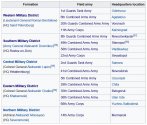
Each army has an artillery brigade, rocket brigade, air defense brigade, logistical brigade etc etc but some can have as few as 1 or 2 motor rifle brigades while others have 2-3 divisions. Still the armies now are functional tactical formations that can perform tasks independently.
As for why divisions were chosen over brigades - it has to do with the platoon/company structure and the tactics that are being taught as well as the limitations that this imposes, partly because of the weakness of the NCO and lower officer corps.
Russian tank battalion:
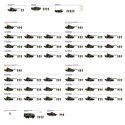
Russian motor rifle battalion:
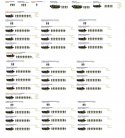
Currently the structure is different depending on the type of the unit. All brigades and regiments have three "maneuver" battalions and one "reinforcement" battalion that is used to augment battlegroups formed from maneuver battalions.
- motor rifle brigade/regiment - 3x motor rifle battalion (3 companies / 30 vehicles) + 1x tank battalion (4 companies / 40 vehicles)
- tank brigade/regiment - 3x tank battalion (3 companies / 30 vehicles) + 1 motor rifle battalion (4 companies / 40 vehicles)
This was done to further optimize the use of weak NCO/LO cadres as well as better use limited numbers of contract troops. I already wrote about the issues with Battalion Tactical Group in the past so you can look up my posts to find it.
The above structure has inherent weakness if the main tactical formation is a brigade because NATO brigades are structurally stronger. Each NATO platoon has four vehicles and that particularly matters for tank formations because a NATO tank platoon is capable of operating as an independent tactical formation with two pairs of tanks performing maneuver. Russian tank platoon has three vehicles and is incapable of using the same tactic which is then further complicated by the NCO/LO weakness as well as lack of personnel - NATO tanks have 4 crewmembers, Russian tanks have only 3. Finally NATO armies moved to professional cadres and tank crews in particular are composed of professional personnel
NATO tank company has 13 or 14 vehicles - 3 platoons of 4 vehicles and 1-2 vehicles in command platoon, typically professional.
Russian tank company has 10 vehicles - 3 platoons of 3 vehicles and 1 command tank, typically conscript. This structure is directly inherited from Soviet army where a tank company - rather than a platoon - was the smallest independent tactical unit.
Tactics is governed by law of proportions. Attacker has to have a minimum 2,5x of the defending force to succeed in pushing the defender out of position. 30 tanks with 3x3 structure is not 2,5x of 14 tanks of 3x2 structure. Ratios are:
At company level 10 tanks is just the minimum 2,5x over 4 tanks but 3 fire units (platoons) barely beat 2 fire units (pairs) - a ratio of 1,5.
As a result in tactical terms a NATO tank company is considered approximate equivalent of a Russian tank battalion, and a NATO tank platoon, is considered to be weaker equivalent of Russian tank company. Add to that technical advantage of NATO tanks before the modernization program was started and it becomes obvious why changes were necessary.
The return to army/division structure was an attempt to improve combat capabilities without having to reorganize the entire lower structure of platoons, companies and the cadres and training system involved in it, which would take up to two decades. Russian General Staff knew their ground forces were poor quality at the bottom and nothing could be done about it in the near term so they reinforced the top.
Also compare how Ukrainian army has been restructured following 2014 under NATO instruction - this is Ukrainian mechanized infantry batalion. Note inclusion of a tank company in the structure of the battalion.
Ukrainian tank battalions consist of 3 companies of 13 tanks (3 platoons x 4 tanks, 1 command tank) and 1 company of 11 IFVs (3 platoons of 3 IFVs, 2 command IFVs) Ukrainian mech battalions consist of 3 companies of 11 IFVs and 1 company of 13 tanks.
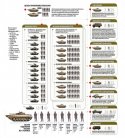
This was chosen because the ongoing war in Donbas as well as the extensive training program run by NATO allowed Ukraine to train its lowest ranks of NCOs and some of the lower officers o they could put together battalions structured nominally as tactical battlegroups and this is why you can see individual battalions being used on the front independently of the rest of the brigade, often separated by hundreds of kms from their brigade.
At the same time Russian forces use battalion tactical groups deployed from larger formations - brigades or regiments.
This is the consequence of the evolution of both forces. Ukraine built its army from the ground up after 2014 (Donbas). Russia built its army from the top downards after 2008 (Georgia). Each side used as foundation the thing which they had best - Ukraine had experienced lower ranks and NATO advisors higher up but weak higher cadres, Russia had strong post-Soviet institutions and doctrine but weak lower ranks.
If Ukraine wants to truly “turn the tide of the war”, the West’s military production as a whole must completely outstrip that of Russia.
Not true. Currently there is a single weakpoint that can collapse the entire Russian frontline - Tokmak/Melitopol.
Tokmak is the transport hub connecting railway lines from Crimea and Zaporozhia front. Melitopol is the urban centre that serves as a staging base and point of resistance.
Because Russia hasn't managed to restore the rail connection from Donbas to Zaporozhia - this is what the fights near Vuhledar and Volnovakha are about - the connection through Tokmak is the
only rail connection supporting the forces in the entire southern front. It will therefore be heavily defended but it is a similar situation to that in Kherson before the collapse of the western bank. Ukraine can put constant pressure on that point until Russia makes a mistake which at this point seems like a question of when and not if.
The only counter that Russia has is further mobilization and an attempt at a large counter-offensive early next year. If they don't do it - and succeed in gaining ground, thus forcing Ukraine to redirect forces - they lost the war.
If Tokmak/Melitopol is lost Ukraine can push toward Crimea and that will cause chaos, panic and total collapse of morale. Ukraine doesn't have to capture either Donbas or even the occupied parts of Luhansk oblast (Starobilsk direction) because those are worthless tactically. They can even give up some of the ground captured in September/October as long as they push to border of Crimea.
Direct threat to Crimea is "check" considering the logistical importance. If Russia doesn't manage to "check" Kiyv at the same time - and nothing else will constitute an effective "check" - it's "checkmate" in a couple of moves. From the operational and strategic perspective the south is much more important to Russia than the east. Specifically the northern Luhansk oblast is the least valuable part of Ukraine. Here's a map with pre-invasion populations of the
raions in the oblast.
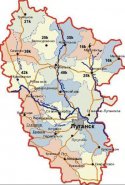
All of the nearby regions are mostly evacuated. Kharkiv is the nearest large urban and industrial center and it will be next to impossible to capture considering size and preparations as well as the failure in February. Ukraine can sacrifice those areas and even parts of Donetsk oblast for a decisive push in the south toward Crimea that will force Russia to escalate beyond what it is capable of winning or to concede defeat. So it's this or mass mobilization for a decisive counter-offensive and mass mobilization means 1916-1917.





